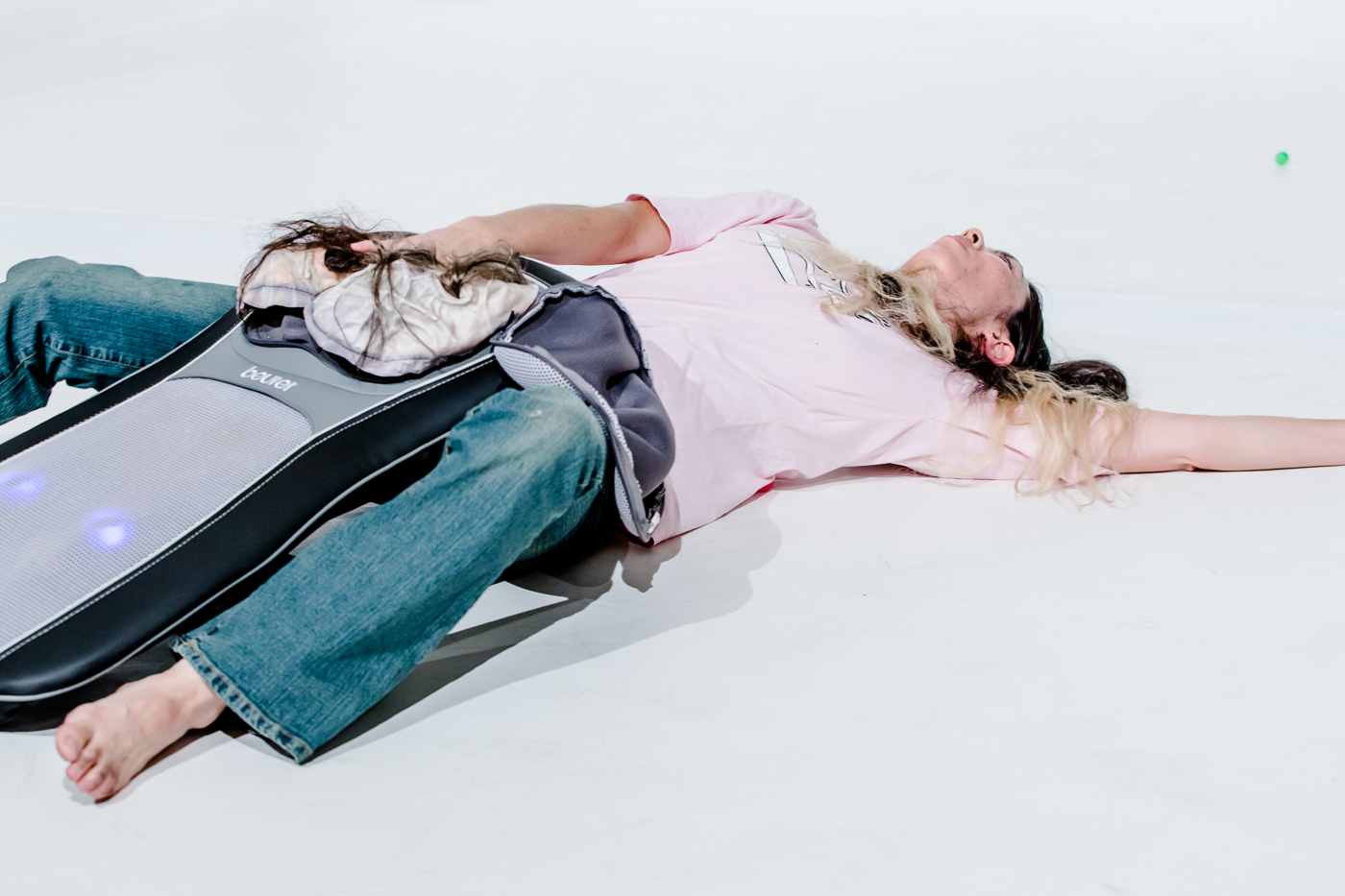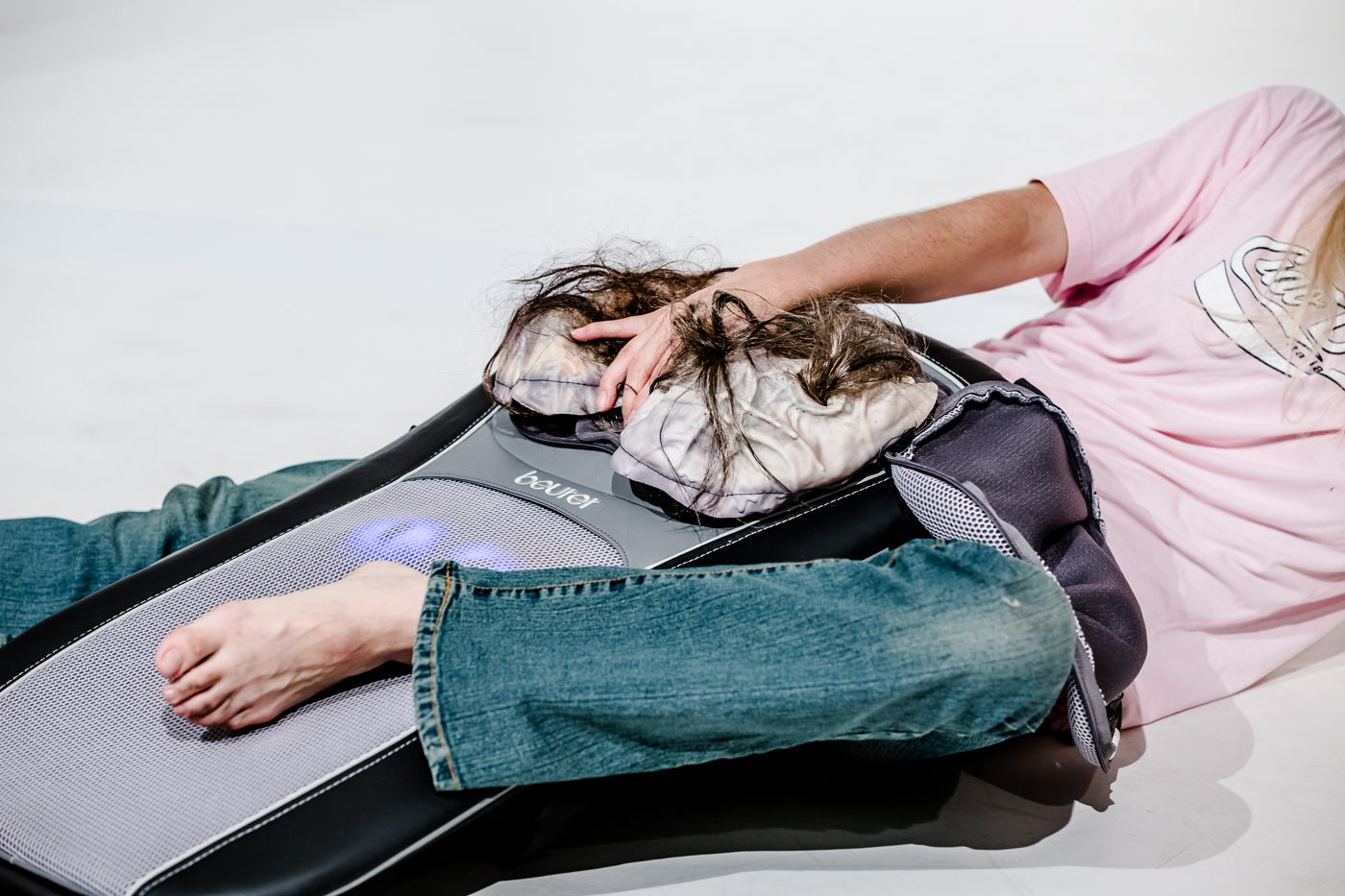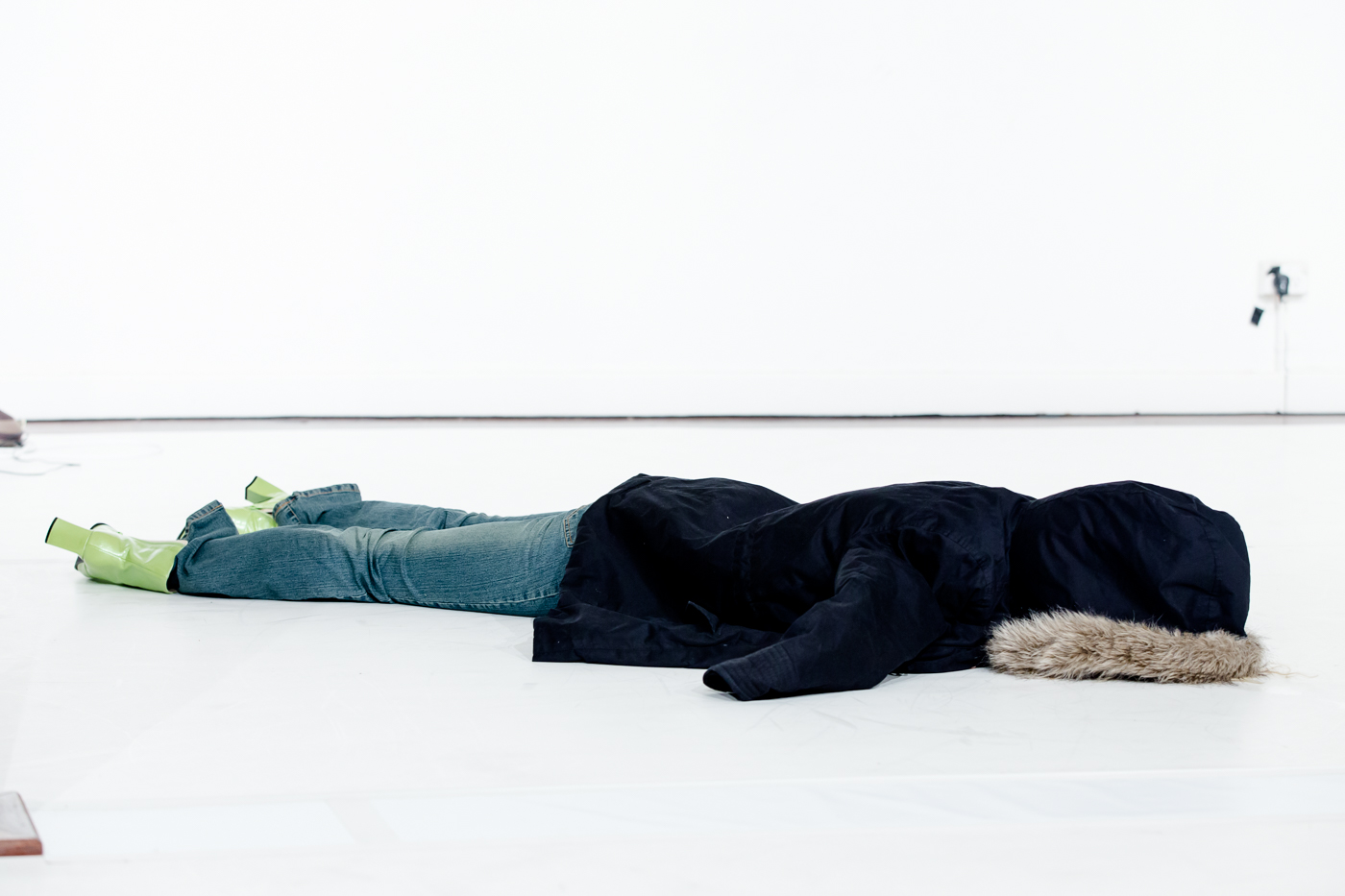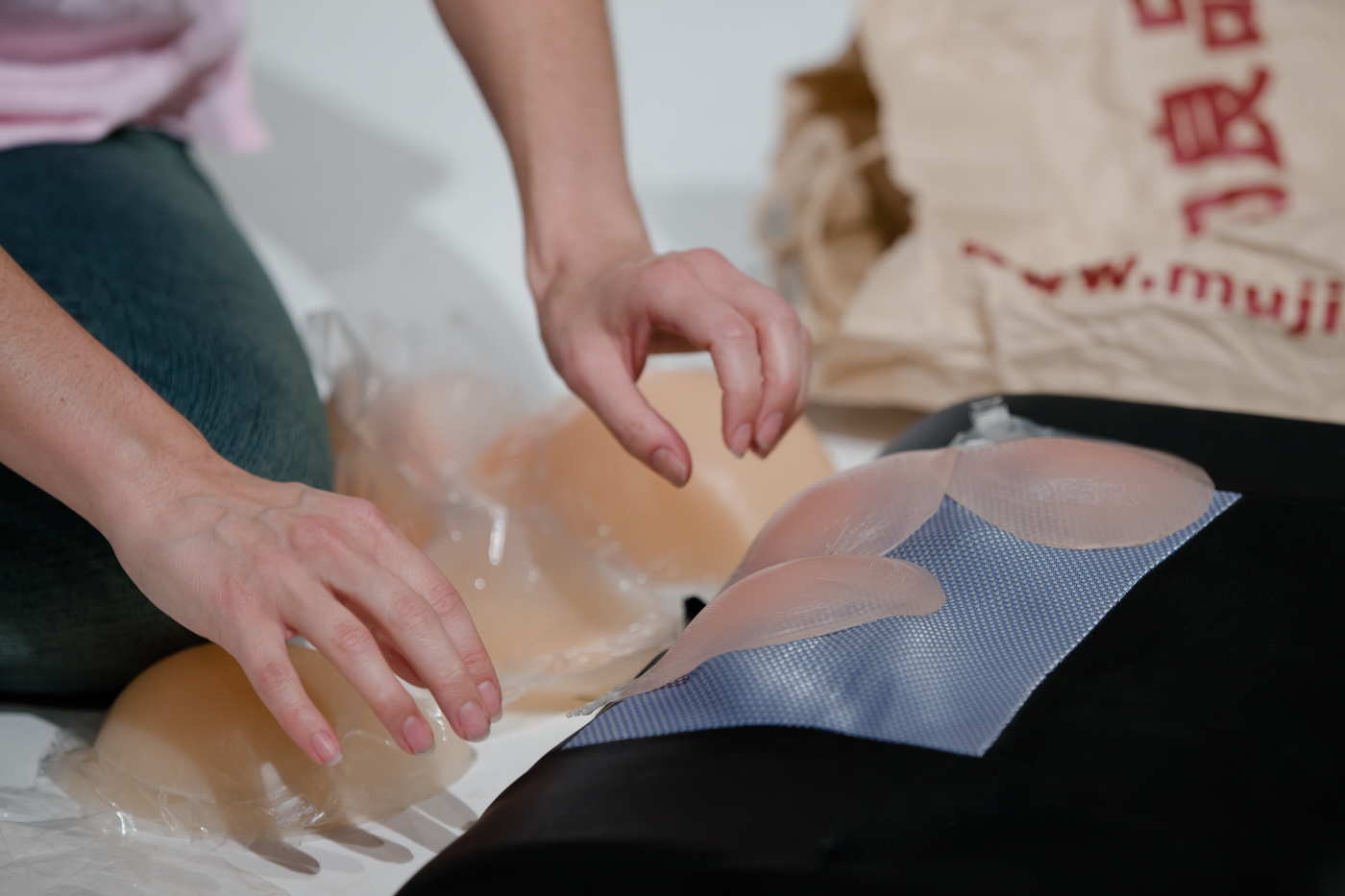
Do you remember how the Fembots from Austin Powers were destroyed by ‘mojo’? But how Ava from Ex Machina saves herself through the brutality of her total lack of empathy? Remember when I cried into my iPhone so much that it broke? Not even burying it in rice could fix it. Maybe it was about the saltiness of the tears.
Hardware. Software. Wetware.
Veils. Screens. The Matrix.
The history of women and mechanical production has, literally, been woven together. Weaving, looms, switchboard operation, hardware assembly lines – woman and machine have always been closely intertwined. And, in an endless string of science fiction, horror, and post apocalyptic scenarios, our cultural imagination has also entangled the narratives of femininity and technology. Enter, the fembot.
Uncanny Valley Girl addresses a fantasy that operates on two levels – the erotic fantasy of the female body, and the utopic/dystopic fantasy of escalating technological advancement. The fear of technology rising up and destroying humans becomes even more horrific when it is feminised – as though our ultimate fear is not only the rising up of the machine, but also the rising up of the feminine body.
The ‘uncanny valley’ is a term coined by robotics professor Masahiro Mori in 1970. It refers to a steep dip in a graph measuring our comfort with human-like characteristics. When features look and move almost, but not exactly like natural beings, it causes a response of fear or distaste in observers. When robots look too much like a real human, it makes us uncomfortable. The uncanny valley maps the visceral reaction at the borders of life and technology, the real and the unreal, and pleasure and horror.
Uncanny Valley Girl dives in to the deepest depths of this valley, not in order to explore what makes us alive, but in search of far more confronting and horrific questions about what we can do with emptiness. What pleasures and horrors can be imagined in the void? When something isn’t quite alive, it definitely can’t die. And with this in mind, the ghost in the machine needs to work out an altogether different way to haunt.
With collaborators Holly Childs and Corin Ileto.
Performances:
25-26 October 2019 – ARNOLFINI, in the frame of the Still I Rise exhibition and program, Bristol, UK – https://arnolfini.org.uk/whatson/performance-uncanny-valley-girl/
24-25 May 2019 – SPRING Festival, Utrecht, The Netherlands – https://springutrecht.nl/shows/uncanny-valley-girl/?language=en
17 November 2018 – Baltic Circle Festival, Finland, Helsinki – https://balticcircle.fi/en/events/angela-goh-uncanny-valley-girl/
18-21 October 2018 – Performance Space Liveworks Festival, Carriageworks, Sydney – http://tix.performancespace.com.au/Events/Uncanny-Valley-Girl
14-18 March 2018 – Festival of Live Art, Arts House, Melbourne – http://fola.com.au/program/uncanny-valley-girl/
2-4 September 2016 – Creative Development and Public Program – Adhocracy development program, Vitalstatistix, Adelaide – http://vitalstatistix.com.au/projects/adhocracy-2016/
27 November 2015 – Party Version, first performance experiments, OUROBOROS: THE END IS THE BEGINNING IS THE END curated by Justin Shoulder, Firsdraft Gallery, Sydney – http://firstdraft.org.au/exhibitions/ouroboros/
https://vimeo.com/266803631









